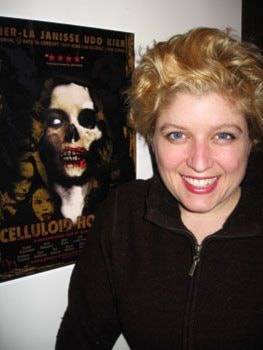Whimsical music, clown makeup, stilts, and a morality tale about the importance of embracing one’s emotions; it’s all part of this Thursday’s French-language performance of Pleurer Pour Rire at the Yukon Arts Centre.
“The title means ‘crying to laugh.’ It’s about a little girl who learns that she has to express her emotions rather than repressing them if she’s going to feel good and be happy,” said director Arlin McFarlane.
The play is the first performance by Whitehorse’s Theatre de la Pasteque (Watermelon Theatre) in more than 13 years.
The group was formed in 1992 by two teachers at Whitehorse Elementary for the purpose of performing French-language children’s theatre.
Its most recent play, Des Livres et Zoe, won national recognition from the Canadian Association for French Language Education.
The performers of Theatre de la Pasteque are all Whitehorse Elementary teachers.
The story of Pleurer Pour Rire tells of a little girl named Moa, who has lost her dog.
However, Moa’s feelings of sadness are constantly reined in by Toa, an extremely tall man who tells her to bottle her emotions and “wear a smile.”
“Toa says that if she cries or if she gets mad she won’t grow up and be as tall as he is,” said Helene Saint Onge, who plays Moa.
Toa is a stern authoritarian, a role accentuated by his towering height, accomplished thanks to a pair of stilts worn by actor David Whiteside.
The character also has an obsession with keeping clean, “a spic-and-span guy” said Saint Onge.
Toa’s strict daily washing regimen is regulated by a “pratico-clock” hung from his neck, a device eerily similar to the modern Blackberry.
It was a funny concept when the play premiered in the early ‘80s, but now the idea of a life-regulating computer has become more commonplace, said Saint Onge.
As emotional repression makes Moa increasingly ill, she is met by her mirror-image incarnate, a girl named Soa who teaches her the importance of feeling her sadness and letting it go.
The play incorporates a number of visual and character elements that are unique to French culture.
The play’s clownish style could “easily be traced back to early Parisian physical theatre,” said MacFarlane.
The work was originally written in 1984 for the Montreal-based Theatre de la Marmaille, a Quebecois theatre group with “a huge influence on children’s theatre in Canada,” said Saint Onge.
Theatre de la Marmaille arose on the Quebec arts scene around the same time as the world renowned Cirque du Soleil, and may even have some mutual influence, said McFarlane.
Despite being more than 20 years old, the “basic subject of Pleurer Pour Rire is still relevant,” said McFarlane.
“It teaches the importance of being able to talk about yourself to the right person,” she said.
The play has already been incorporated as a brief element of the Whitehorse Elementary curriculum, and is being used as a tool towards teaching emotional development, personal planning and French vocabulary.
The group is confident that the play’s unique style will appeal to both young and old
“It has a lot of winning characteristics: a big guy on stilts, classical elements of broad comedy, even a chase scene,” said Saint Onge.
“Even if anglophone parents don’t understand every word, they should still be able to understand what’s going on,” she said.
The play will be performed as a matinee for elementary school children on Friday, but will play for the public at the Yukon Arts Centre Thursday evening.
Tickets are available for $7 at Arts Underground and the Yukon Arts Centre.
